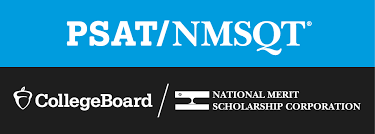Many rising sophomores or juniors are likely hearing about their upcoming PSAT and wondering what is the purpose of the test. When it comes to the PSAT-NMSQT, it is helpful to start with what it stands for: Preliminary Scholastic Aptitude Test-National Merit Scholarship Qualifying Test. The PSAT gives students a preview or practice for the SAT. When testing as a junior, students are entered into the National Merit Scholarship Competition where a $41 million pot of scholarships exists for students who qualify. For many who take the test, the benefit lies in seeing what potential exists for their SAT score, as well as access to college mail from schools soliciting students from certain demographics or score ranges. For a select few, qualification for the scholarship competition is their ultimate goal in taking the PSAT.
The PSAT is typically given to students on a school day, usually a Wednesday, although some schools provide a Saturday PSAT option, in October of their junior year. Many schools also offer the PSAT 10 to sophomores on the same day, although this version of the PSAT does not enter them into the National Merit Scholarship Competition (consider this a “practice” to the practice). Results from this October administration of the PSAT are available to students online, typically the second week of December, in the student’s CollegeBoard account. At the time scores are available, students will not know if they qualify for National Merit consideration, which is based on their Selection Index Score, a number between 6 and 228. Students will not receive notification of Commended or Semi-Finalist status until September of their senior year. Only Semi-Finalist students will go on to the scholarship competition formally at this point, with Finalists announced in February of the senior year and Scholars (scholarship winners) announced in April of the senior year. Therefore, during the college application process, students are not aware if they are National Merit Finalists or Scholars. Nationally, about 35,000 students receive the status of Commended Student, and about 16,000 students a year are ultimately Finalists. This means that students need to score in the top ½ of the top 1% of test-takers in order to achieve a National Merit scholarship. To advance from a Semi-Finalist to a Finalist, the CollegeBoard requires students to complete an application which includes an essay, transcripts, letters of recommendation, and submission of an SAT or ACT score. The SAT or ACT score serves as verification of their performance on the PSAT.
For those hoping to achieve recognition in the scholarship competition, their success depends on the Selection Index Score. The Selection Index Score is found by calculating the sum of a student’s Reading, Writing, and Math subscores and then multiplying by 2. The index score is weighted in a different way than the overall PSAT score because each section represents ⅓ of the index score, whereas in the overall score, the combined Reading and Writing is ½ and Math is ½. For the Class of 2022, the score required to be considered a Commended Student was 207, which is used for all students nationally. The Selection Index required for Semi-Finalist will vary by state, with the highest indices in Maryland and DC at 224 and the lowest in North Dakota and West Virginia at 207. The score required in Ohio for Semi-Finalist was 215 (which has varied from 215-219 in recent years). Typically, more populated, competitive states will have higher index scores. From year to year, the score necessary for Commended or National Merit Semi-Finalist consideration can change, but we find that students who achieved a Selection Index Score of 190 or higher on their sophomore PSAT 10 may have a good chance of achieving National Merit consideration. For students scoring under a 190, it can be best to treat the PSAT as a practice exam for the real SAT.
The PSAT is divided into Verbal and Math components. The Verbal portion is split into two sections, Reading and Writing & Language. The Writing & Language covers English grammar and the Reading test covers reading comprehension, textual evidence for answers, and words in context. Unlike previous iterations of the PSAT, today’s PSAT does not emphasize vocabulary preparation through memorization of obscure words. Now, students are tested on their vocabulary in a different way–through context. The Math section is also divided into two sections comprised of a No-Calculator and a Calculator section. The first section does not permit students to use their calculator on any of its 17 questions; however, the second “Calculator” section encourages students to utilize this tool for all of its 31 questions. The Math sections lean heavily on algebra (Algebra 1 and Algebra 2), with only a minimal focus on geometry and trigonometry. If your student is studying Algebra 2 or has already completed that course, they will be in good shape for the PSAT Math. To see official practice PSAT tests, check out our PSAT resources.
You may ask, how does the PSAT differ from the real SAT? The honest answer is that it’s slightly shorter. The PSAT is 15 minutes shorter, with sections like Reading and Math asking 15 fewer questions than the SAT. Students also have a little bit more time per question on some sections, although that difference is fractional. The Math-No Calculator section, in particular, offers students 90 seconds per question, whereas the SAT offers 75 seconds per question. This could potentially give students a somewhat skewed view of how they will perform on the SAT. The SAT Math test includes a few additional topics from geometry and trigonometry that do not appear on the PSAT. So, it can be helpful for students preparing for the actual SAT if they’ve taken some portions of Precalculus (although it is not necessary to take Precalculus to still do well on the SAT Math section). Overall, the PSAT is a great way for students to understand what the SAT will look and feel like. Remember that a student’s PSAT score does not factor into college admissions, though. For that, they’ll need to take an SAT or ACT.
So what is the benefit of taking the PSAT? First of all, there’s nothing better for students’ preparedness as much as taking an official, proctored test. For many students, the PSAT is exactly what it sounds like: a preliminary or “practice” SAT. Their PSAT administration in October is the best way for students to get into the testing mindset and prepare for their future college admissions tests. The other greatest benefit to the PSAT is the test review students can participate in after the fact. When students’ results come back in December, students can look at the actual test questions they missed on test day on their CollegeBoard online accounts. The CollegeBoard’s website also offers customized practice to students, based on their specific test performance on the PSAT. Students can even look at every question that appeared on the PSAT, including the questions they answered correctly. In terms of future preparation, this is a huge first step. But in the college application process, a high PSAT score does not often count for much. Colleges do not ask students to submit their PSAT score on their application, so a high SAT or ACT score and good grades matter more when it comes time to fill out the Common App. Ultimately, students can use their PSAT score to decide whether it is better to focus on the ACT instead.
For the students who score particularly well on the PSAT, the greatest benefit, of course, is the chance to qualify for National Merit consideration and the scholarships that can come with it. In addition to scholarships from the National Merit Scholarship Competition, some colleges offer their own scholarships to competition finalists. National Merit Finalists can receive a $2500 award as a part of the scholarship, as well as the opportunity to obtain multi-year scholarships offered through different colleges and corporations. The University of Alabama, University of Oklahoma, and Denison University, for example, offer full-tuition scholarships to those who have been recognized in the National Merit process. If a finalist’s parent works at any of the companies that sponsor the PSAT-NMSQT, that can also come with additional scholarship opportunities. The PSAT guidebook includes a section of companies that sponsor the competition. It is important to note, though, that not every college and university offers a National Merit Finalist scholarship. Many highly selective colleges do not offer merit scholarships, so ensure a student’s college list has taken their specific scholarship plans into consideration. If a student wants to maximize their National Merit scholarship opportunities, they should do their research into what colleges’ current offerings look like.
Seeley Test Pros has successfully prepared hundreds of students for the PSAT in the last 25 years. We are happy to discuss your PSAT results at 216-965-5162 or at [email protected].


